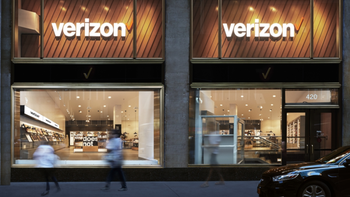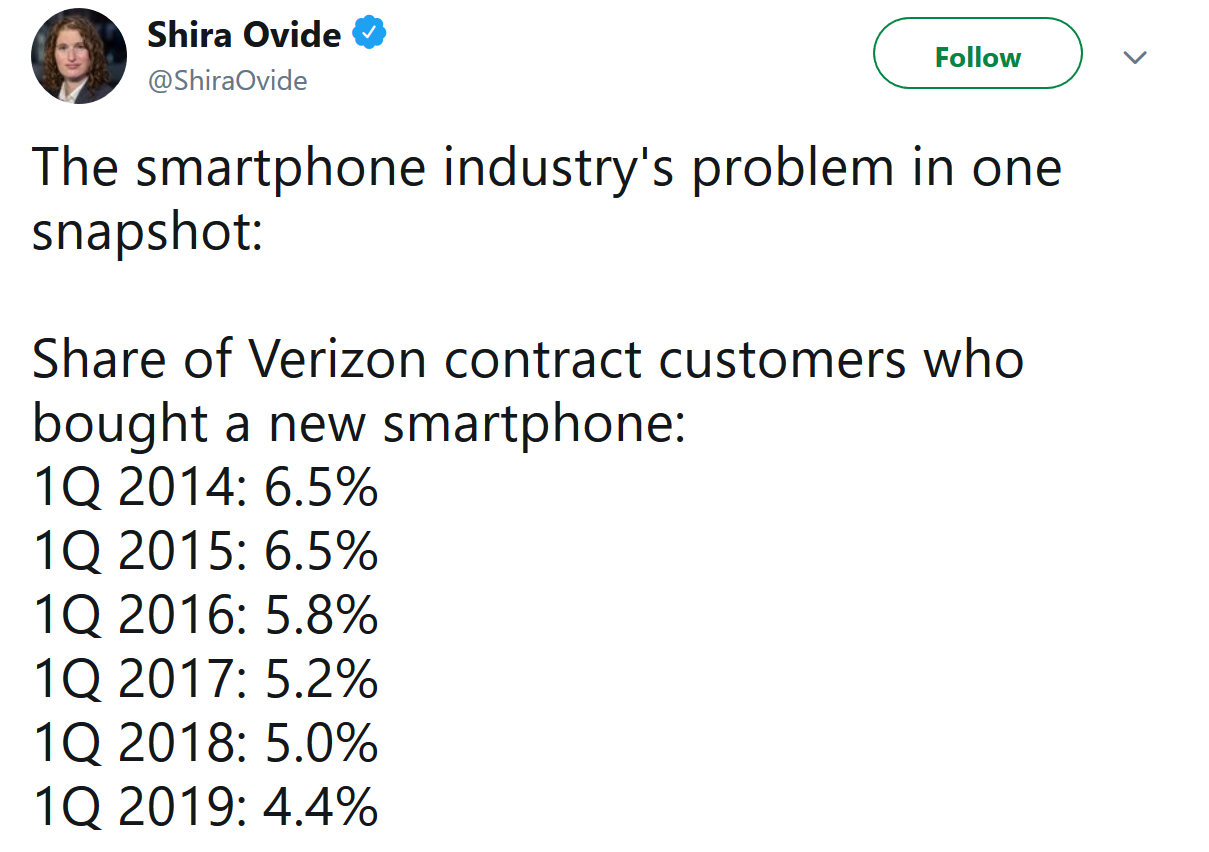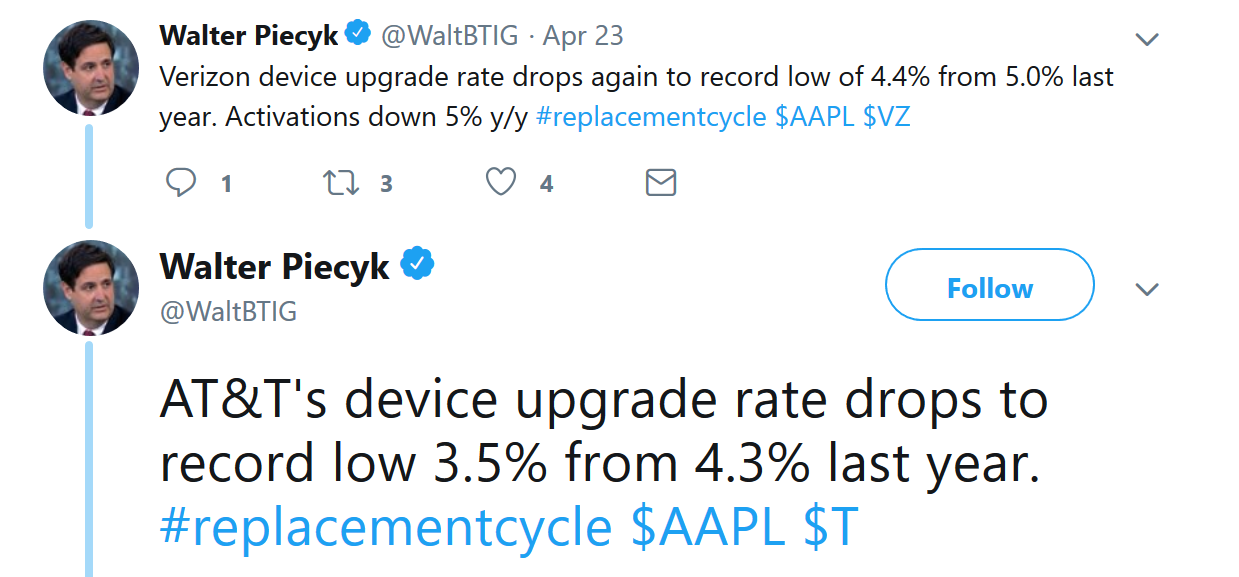Figures from Verizon and AT&T show why the U.S. smartphone market is struggling

When Verizon and AT&T both reported their first-quarter earnings earlier this week, the data that came out confirmed something that has been apparent for some time; U.S. consumers are no longer upgrading their phones every two years. This is one of the reasons for sluggish smartphone sales in the country, along with higher prices and lack of innovation.
BTIG analyst Walter Piecyk disseminated a pair of tweets (via The Verge) the other day pointing out that during the first quarter of 2019, AT&T's upgrade rate dropped to a record low 3.5%. That is down from the 4.3% rate it had during last year's first three months. Verizon's upgrade rate during the same quarter declined to a record low 4.4%, down from the previous year's 5.0%.
Speaking of Verizon, Bloomberg's Shira Ovide notes that the percentage of Big Red's contract customers purchasing a new handset during the January through March period over the last few years has been in a steady decline. That figure was 6.5% during the first quarter of 2014, holding steady during the first quarter of 2015 before declining every year to the current 4.4% rate.

Fewer Verizon customers are upgrading to a new phone at the beginning of each year
The low upgrade rates in the U.S. could soon turn around once 5G service becomes more widespread in the country. Right now, AT&T offers 5G service in 19 markets through the use of the Netgear Nighthawk 5G mobile hotspot. Verizon has mobile 5G available in Chicago and Minneapolis and announced plans on Thursday to expand the service to another 20 markets. Currently available only on the Moto Z3 with the 5G Moto Mod accessory attached, the nation's largest carrier has started taking pre-orders for the Samsung Galaxy S10 5G. The device is priced at $1,299.99 for 256GB of storage (or $54.16 a month for 24 months). The version with 512GB of storage will cost $1,399.99 (or 24 monthly payments of $58.33). Apple is not expected to offer a 5G phone until late 2020.
Eventually, foldable phones could also provide a reason for U.S. smartphone users to upgrade. But as we see from the problems that Samsung is having with the Galaxy Fold, and the prices that these devices cost, it might take a number of years before this niche area of the smartphone market can give the industry a shot in the arm.

Verizon and AT&T had record low upgrade rates for the first quarter of 2019










Things that are NOT allowed: